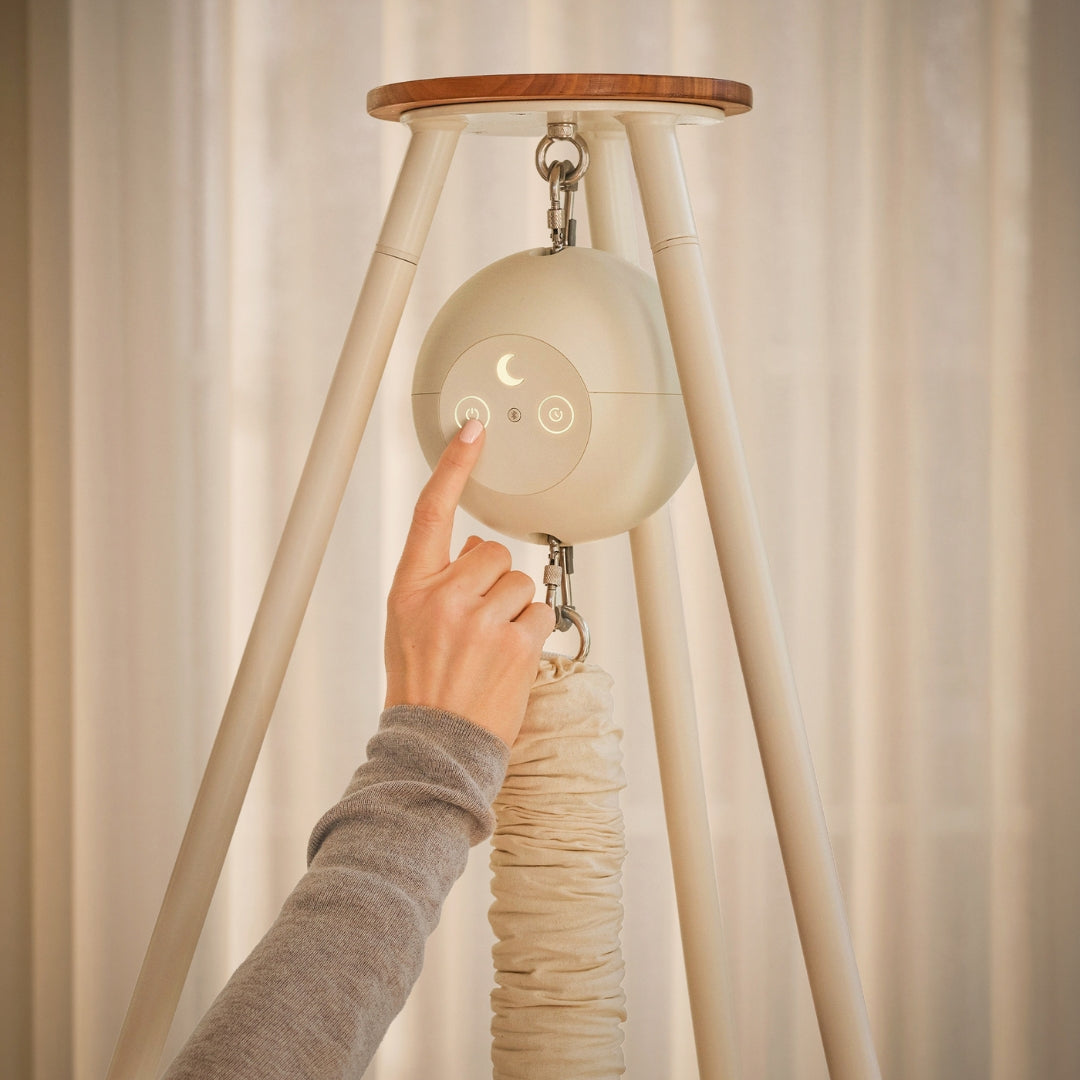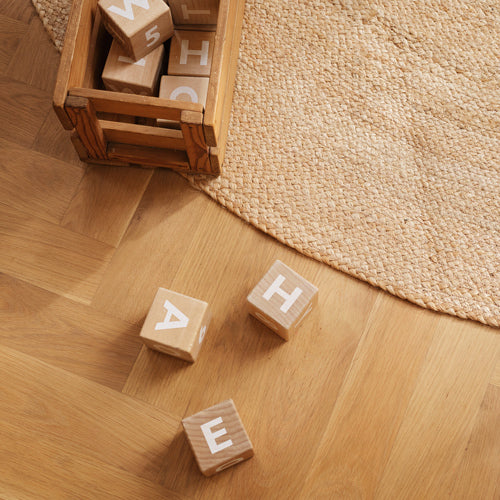


You’re watching your baby sleep. Everything seems peaceful, then suddenly, your little one raises their arms and legs, only to let them fall back down again. Does this sound familiar? If so, there’s no need to worry. This is usually a completely normal behavior in newborns called the Moro reflex, or startle reflex.
The Moro reflex is a sudden, brief response triggered by things like loud noises, bright lights, sudden movements, or the sensation of falling. You might notice your baby extending their arms and legs away from their body and to the sides, then drawing them back together as if giving a little embrace.
Why do babies have the Moro Reflex?
All babies are born with a set of natural reflexes which are involuntary movements or actions. Some reflexes occur spontaneously as part of normal activity, while others are automatic responses to certain stimuli. You may have heard of the sucking reflex, grasp reflex, or stepping reflex. Most reflexes are innate and are either not controlled or only minimally controlled by conscious thought.
Reflexes play an important role in helping babies survive and navigate the world. For example, without the sucking reflex, feeding in those first few months would be much harder, if not impossible. Some reflexes, like the Moro reflex, naturally fade as your baby grows, while others stay with us for life. Most reflexes are very similar for everyone. For example, blinking when air suddenly blows into your eye, it happens automatically. Doctors check these reflexes because they give a good idea of how your baby’s brain and nervous system are developing.
The Moro reflex happens when a baby is suddenly overwhelmed by too much sensory information. The first phase, raising the arms, is a reaction to the stimulus. In the second phase, pulling the arms and legs back in, the baby instinctively clings to something or someone nearby, usually the mother, for comfort and protection. This reflex can be triggered by loud noises, sudden changes in light, vibrations, or shifts in the baby’s position.
What causes the Moro Reflex
The Moro reflex happens when your baby experiences sudden or unexpected sensations. These can come from a variety of everyday moments, such as:
- A loud sound nearby
- Quick or unexpected movements
- A sudden shift in lighting
- A feeling of losing balance, like when being gently lowered into a crib or lifted from the bath
-
A quick change in the position of the head or body
Sometimes these triggers are so subtle that they might go unnoticed by adults. But for your baby, who is still adjusting to life outside the womb, even small changes can feel surprising and cause this natural reflex.
When and how does the Moro reflex occur?
The Moro reflex is present from birth and is most noticeable in the early weeks. In the first month, your baby is adjusting to a world full of light, sound, and movement, so their reactions to sudden changes can be quite strong.
By around 2–3 months, most babies start to settle a little. They have already begun getting used to life outside the womb, but it is still common for sudden noises or movements to startle them awake, sometimes needing your comfort to drift back to sleep.
From 4–6 months, your baby’s nervous system is more developed, and they can handle everyday sensations more calmly. They may also have the muscle strength to roll onto their side, which changes how they respond to stimuli. By the end of this period, the Moro reflex usually fades away entirely.
Every baby develops at their own pace, so it is normal for the reflex to disappear a little earlier or linger slightly longer. If you ever feel unsure, your pediatrician can check how your baby’s nervous system is developing, confirm that reflexes are on track, and offer guidance on making this stage as comfortable as possible for both you and your baby.
How does the Moro reflex affect my newborn and how can I help?
While the Moro reflex is completely normal, it can affect some babies more than others. It’s often more noticeable in babies who are jumpy or very active. When a baby suddenly throws their arms out while sleeping, they may startle themselves awake. This can cause crying because they feel confused and upset, not understanding what just happened. If this happens, here are some ways you can help:
- Hold your baby close or use a baby wrap to provide gentle physical contact and warmth.
- Comfort your baby by singing soothing songs or playing soft music to help them settle again.
- Use a baby hammock or cradle to gently rock your little one back to sleep.
- Try swaddling to help your baby feel secure.
It’s also important to remember that your baby won’t always wake up from the Moro reflex. If the trigger is mild or your baby tends to be calm, they might simply continue sleeping through it. As your baby grows, the reflex naturally becomes less intense, which usually means fewer sudden awakenings.
Swaddling and the Moro Reflex
Life outside the womb feels big and open compared to the tight, secure space your baby was used to before birth. That’s why swaddling can be a huge comfort, especially for babies experiencing the Moro reflex.
A swaddle gently limits your baby’s movements, helping bring their arms and legs back in when they startle, while also recreating the cozy feeling of the womb. This can make it much easier for them to settle and drift back to sleep.
Swaddling works best when introduced from birth. Making it a consistent part of your baby’s bedtime or naptime routine helps them associate the swaddle with rest. Most babies are swaddled until around four to six months old, so it can be an effective way to soothe the Moro reflex until it naturally fades. You can read more about swaddling in our article here.
When your baby is ready to move on from swaddling, a sleep sack is a gentle next step. The soft weight in the center can mimic your touch, offering comfort and security to little ones already used to being snugly wrapped.
What if my baby doesn’t show the Moro reflex?
The Moro reflex is one of the early signs doctors look for to check how a baby’s nervous system is developing. If you notice that your baby does not display this reflex, it might suggest that their nervous system needs a closer look. This is something your pediatrician will usually check during regular health visits.
If you observe that your baby is not showing the Moro reflex outside of these scheduled appointments, it’s important to mention it to your pediatrician right away. Early evaluation can help identify any concerns and ensure your baby gets the support they need as soon as possible.
Remember, every baby is unique, and your doctor is the best person to guide you through any questions or worries about your little one’s development.
A final note
The Moro reflex is a completely natural part of your baby’s early development and nothing to worry about. It shows that your baby’s nervous system is growing and adapting to life outside the womb. Most babies outgrow this reflex by around six months of age. During this time, you can help by offering plenty of gentle touch and warmth, soothing your baby whenever the reflex causes them to startle or fuss.
In rare cases, the Moro reflex may continue beyond infancy, sometimes lasting into childhood or even adulthood. This is called a persistent Moro reflex and can sometimes contribute to challenges like balance difficulties, heightened anxiety, or sensory sensitivities. The good news is that with the right support and therapy, these effects can often be managed or even improved.
If you ever have concerns about your baby’s reflexes or development, don’t hesitate to reach out to your pediatrician for guidance and support.




































